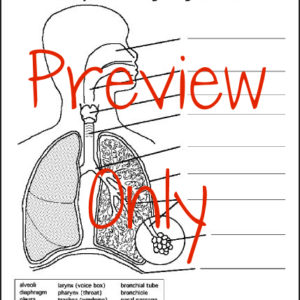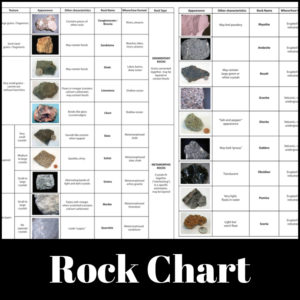Showing 21–40 of 129 resultsSorted by latest
-
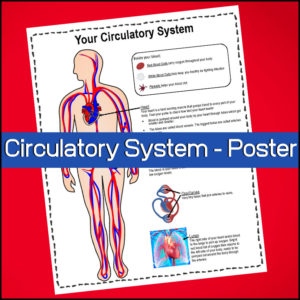 $1.50Buy Now
$1.50Buy NowHere is a classroom poster describing the basics of the human body’s circulatory system. Perfect for a Science or Health bulletin board.
The poster outlines basic functions for the following:
- heart
- arteries
- veins
- capillaries
- lungs
- red blood cells
- white blood cells
- platelets
-
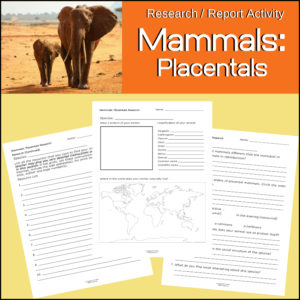 $2.00Buy Now
$2.00Buy NowPlacental mammals are the most diverse group of mammals with about 4000 discovered species and include dogs, cats, rodents, elephants, whales, cattle, pigs, humans and many more! If you are planning a study on these mammals, this product will guide students through their research and can be used as the end reporting tool!
-
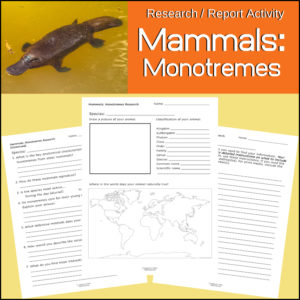 $2.00Buy Now
$2.00Buy NowThis science, animal study activity is designed to guide your students through the researching and reporting of any egg laying mammal (also known as Monotremes). These unusual mammals only reside in Australia and New Guinea. There are only five known species of monotremes: the platypus and four species of echidna.
This product will guide students through their research and can be used as the end reporting tool!
-
 $2.00Buy Now
$2.00Buy NowStudents love kangaroos, wallabies, koalas and other pouch carrying animals also known as marsupials! This resource will guide students through their research on these amazing pouch carrying animals and can be used as the end reporting tool!
-
 $2.00Buy Now
$2.00Buy NowAny mammal designed to swim such as a whale, sea lion, seal or walrus is considered a natatorial mammal. The term natatorial comes from the Latin natātor, natātōrem meaning “swimmer”. This product is perfect for your students if you want to assign a research & report project on water dwelling mammals. It will guide students through their research and can be used as the end reporting tool!
-
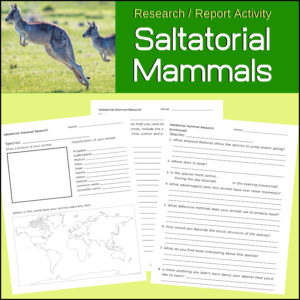 $2.00Buy NowOne way of categorizing animals is how they move. Mammals that are designed to jump, hop, gallop, or leap are called Saltatorial mammals such as the kangaroo, leopard, rabbit, horse, antelope and many others! This product is perfect to use as a research and report assignment to have students study mammals that jump, hop, gallop and/or leap! It will guide students through their research and can be used as the end reporting tool!
$2.00Buy NowOne way of categorizing animals is how they move. Mammals that are designed to jump, hop, gallop, or leap are called Saltatorial mammals such as the kangaroo, leopard, rabbit, horse, antelope and many others! This product is perfect to use as a research and report assignment to have students study mammals that jump, hop, gallop and/or leap! It will guide students through their research and can be used as the end reporting tool! -
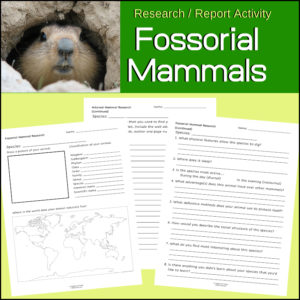 $2.00Buy Now
$2.00Buy NowBurrowing, ground dwelling mammals are known as fossorial mammals. Fossorial comes from the Latin fossor, meaning “digger”, thus mammals such as groundhogs, gophers, moles, rabbits and others are in this group. This resource will help students research and report on fossorial mammals as it guides students through their research and can be used as the end reporting tool!
-
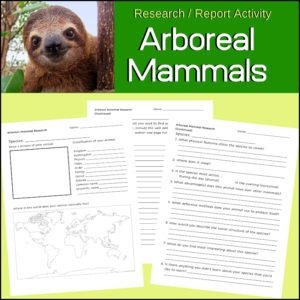 $2.00Buy Now
$2.00Buy NowDuring a study of animals (specifically tree-dwelling, arboreal mammals), students can use this product to research and report on animals such as the koala, monkey, sloth or possum. Any tree dwelling mammal is considered arboreal. Students can use this product as both a guide to their research as well as the end reporting tool!
-
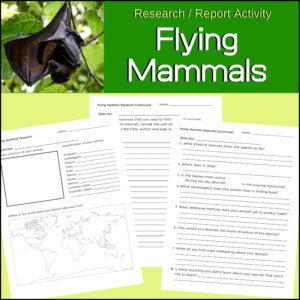 $2.00Buy Now
$2.00Buy NowIn the Science field of Zoology there is a group of mammals that are considered ‘flying’ mammals. This product makes it easy to assign students to research and report on one of these ‘flying’ mammals! Students will be able to use the product to both guide their research and use as their reporting tool.
-
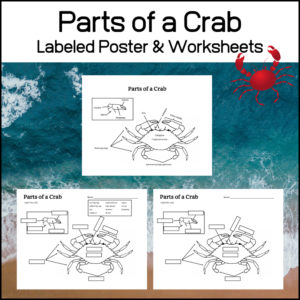 $1.25Buy Now
$1.25Buy NowIs your Science class studying (or preparing to study) ocean life, crustaceans or the phylum Arthropoda? This resource, Parts of a Crab – Poster & Worksheets, includes a labeled poster of a crab and 2 worksheets (or quizzes).
-
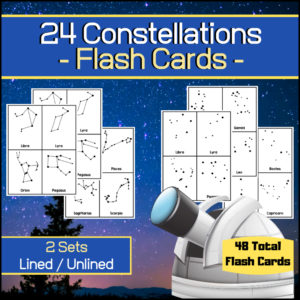 $3.00Buy Now
$3.00Buy NowThis Astronomy / Science resource, Constellation Flashcards, contains 2 sets of 24 constellations for a total of 48 cards. (Includes Astrological / Zodiac Constellations)
- Set one has lines that show the stars connected to create the constellation.
- Set two shows only the stars of the constellation (no lines). You can use set two to have students learn the ‘grouping of the stars’ as they actually see them in the sky -or- you can allow students to actually draw the lines on each card to help learn the constellations.
-
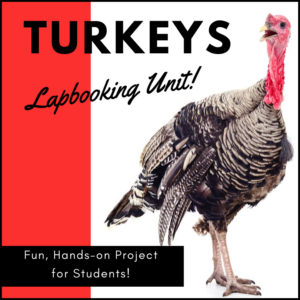 $3.00Buy Now
$3.00Buy NowWhether you are studying turkeys because you want to focus on one species of bird or if it is because you want a fun topic to study around Thanksgiving, your students will love to create their very own turkey lapbook!
A little about ‘the turkey’: Benjamin Franklin would have preferred to have the Wild Turkey, not the Bald Eagle, chosen as the national symbol of the United States. Although the barnyard variety seems to be (according to some sources) lacking intelligence, the original wild form is a wary and magnificent bird. Wild Turkeys usually get around by walking or running, but they can fly strongly, and they typically roost overnight in tall trees.
-
 $2.50Buy Now
$2.50Buy NowExperiments in this book involve Magnets, Air, Electricity,Water, Sound, Sight, Machines, Heat, Chemistry and Plants.The many illustrations are self-explanatory– a great book for budding scientists and teachers.
-
 $8.00Buy Now
$8.00Buy Now‘North American Birds of Prey’ is a 41-page resource designed to help students organize and present reports for each 29 different birds of prey species!
Each species-specific page includes the name of the bird, an illustration and the following sections: description (size, weight, color, markings, etc.), behavior (breeding, nesting, feeding, vocalization, etc.) and range plus a map of North America.
In addition to the species-specific pages, there are ten additional pages on which students can included additional information, draw their own illustrations, plus add additional species to their projects.
Use alone or add to your lessons: North American Birds of Prey Cards
This resource includes pages for the following birds:
• Great Gray Owl
• Ferruginous Hawk
• Common Black Hawk
• Red-Tailed Hawk
• Barred Owl
• Barn Owl
• Short-Eared Owl
• Prairie Falcon
• Swainson’s Hawk
• Snowy Owl
• Turkey Vulture
• Eastern Screech Owl
• Burrowing Owl
• American Swallow-Tailed Kite
• Elf Owl
• Osprey
• American Kestrel
• Peregrine Falcon
• Bald Eagle
• Northern Goshawk
• Merlin
• Golden Eagle
• Northern Harrier
• Northern Saw-Whet Owl
• Crested Caracara
• Great Horned Owl
• Sharp-Shinned Hawk
• Harris Hawk
• Long-Eared Owl -
 $1.50Buy Now
$1.50Buy NowHere are 2 posters (b/w and color) of the process of photosynthesis.
-
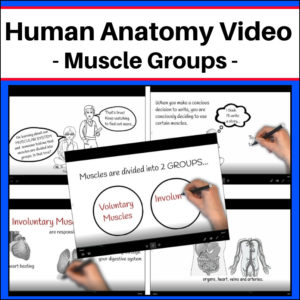 $4.50Buy Now
$4.50Buy NowHuman Anatomy – Muscle Groups Video has been created to introduce, explain and/or review voluntary and involuntary muscles in the human body. Each group is defined, explained and definitions given. This is great for visual learners!
To add student interest, one student is helping another student learn, interesting graphics have been added and upbeat music fills the background. (Music is easily muted if needed.)
-
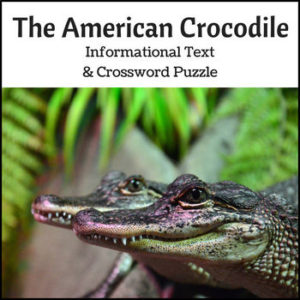 $1.50Buy Now
$1.50Buy NowDesigned for 5th-8th grade students, American Crocodile Informational Text and Crossword Puzzle will provide students with details about the only crocodile native to the Americas in the following categories:
* Appearance
* Differences from alligators
* Distribution and Habitat
* Food and Growth
* ReproductionAfter reading the text (3 pages), students are to complete the crossword puzzle. Answer Key provided.
-
 $3.00Buy Now
$3.00Buy NowStudying ‘Force & Motion‘ in your classroom? This resource has been designed to help students gain a greater understanding as well as to help them retain the information they are learning!
Includes 2 Mini-Books:
- 1 for instructional Use (Will help with understanding)
- 1 for students to complete (Will help with retention of knowledge)


